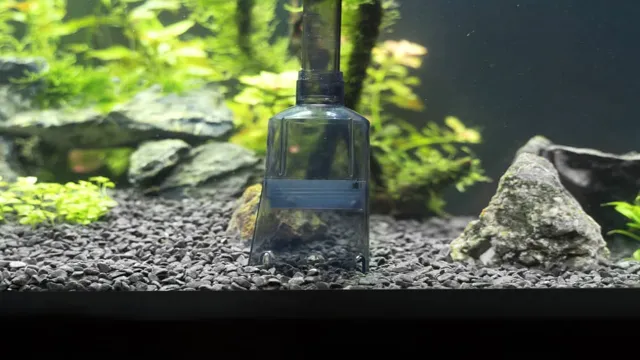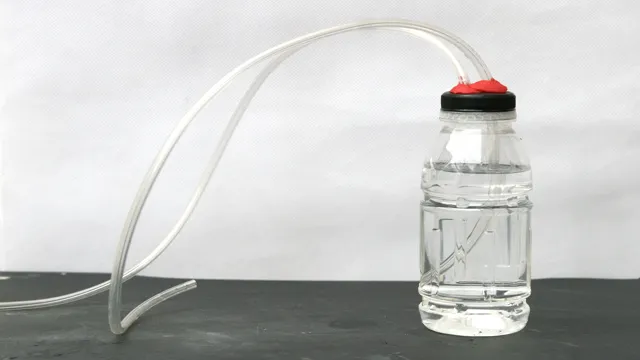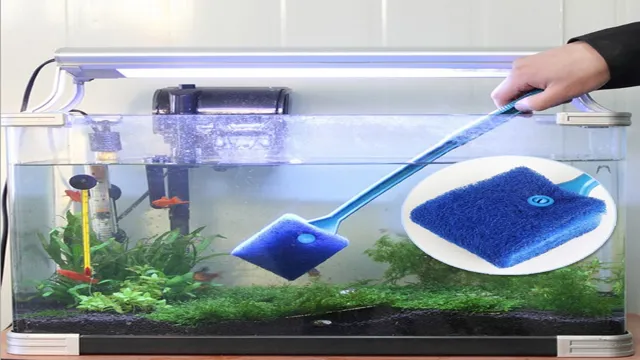When it comes to taking care of your aquarium, it’s important not to overlook the importance of regular vacuuming. Keeping your aquarium clean helps to provide a healthy environment for your fish and plants, and it also helps to prevent the buildup of harmful substances like debris, algae, and bacteria. But how often should you be vacuuming your aquarium? This is a common question among aquarium owners, and the answer depends on a few different factors.
In this blog post, we’ll explore the ins and outs of aquarium vacuuming, discuss some of the key factors that determine how often you should do it, and provide some practical tips for maintaining a clean and healthy aquarium. So whether you’re a seasoned aquarium owner or just getting started, read on to learn more!
Why is vacuuming important for aquariums?
Vacuuming your aquarium regularly is important for maintaining the overall health and cleanliness of the tank. Not only does it remove debris and uneaten food from the substrate, but it also helps to remove harmful toxins and chemicals from the water. So, how often should you vacuum your aquarium? It ultimately depends on the size of your tank and the number of inhabitants, but generally once a week is a good rule of thumb.
However, if you have a heavily stocked tank or notice an excessive amount of debris build-up, you may need to vacuum more frequently. Regular maintenance of your aquarium, including vacuuming, can help prevent potential issues and keep your aquatic pets happy and healthy. Don’t forget to use a good-quality aquarium vacuum to ensure that you’re removing as much debris as possible and not damaging any delicate plants or decorations in your tank.
By incorporating regular vacuuming into your tank maintenance routine, you’re taking an important step towards ensuring the long-term health of your aquarium.
Removing debris and waste
As an aquarium owner, it’s essential to keep your fish tank clean and healthy, and vacuuming is an essential part of that maintenance routine. A lot of debris and waste can accumulate at the bottom of the tank over time, and if not removed, it can lead to a build-up of harmful bacteria that can cause health issues for your fish. Vacuuming not only removes the debris and waste, but it also gets rid of uneaten food, dead plant matter, and fish poop.
Using a siphon to remove the waste helps maintain good water quality, which is crucial for the health and wellbeing of your fish. Overall, making vacuuming a regular part of your aquarium maintenance routine can go a long way in keeping your fish and plant life healthy and happy.

Promoting healthy water conditions
Vacuuming is an essential task for maintaining a healthy and clean environment inside an aquarium. By removing the debris and waste products, vacuuming helps reduce harmful levels of ammonia and nitrite, preserving a balanced ecosystem for aquatic life. Neglecting vacuuming can lead to an accumulation of fish waste, uneaten food, and other particles, which can quickly lead to an unbalanced system.
This build-up can be dangerous for the fish and other aquatic inhabitants, causing them stress, sickness, and even death. Therefore, regularly vacuuming your aquarium is an important aspect of proper fish tank maintenance. With proper vacuuming, you can ensure a healthy and clean habitat for your fish to thrive in.
So, let’s make vacuuming a part of our aquarium routine for happy and healthy fish. #aquarium #vacuuming #fishcare
Factors to consider before vacuuming your aquarium
When it comes to vacuuming your aquarium, there are a few factors that should be taken into consideration. Firstly, it’s important to consider the size of your tank and the type and number of fish you have. If you have a larger tank with many fish, you may need to vacuum more frequently than you would with a smaller tank with fewer fish.
Additionally, the type of substrate you have in your tank can affect the frequency of vacuuming. For example, if you have sand substrate, you may need to vacuum less frequently than if you have gravel substrate, as sand tends to trap waste more easily. It’s also important to monitor the water quality of your tank regularly and vacuum accordingly. (See Also: How to Get Rid of Reflection in Aquarium: Tips and Tricks for a Clear View)
As a general rule of thumb, it’s recommended to vacuum your aquarium once every two weeks, but this may need to be adjusted depending on the aforementioned factors. By taking these factors into consideration, you can ensure that your aquarium stays clean and healthy for your fish.
Size of your aquarium
When it comes to vacuuming your aquarium, one of the primary factors to consider is the size of your tank. The bigger your aquarium is, the more time and effort it will take to efficiently clean it. Large tanks require more water changes and more frequent cleaning, as they accumulate more waste and debris.
On the other hand, smaller tanks tend to get dirty relatively quickly and will need frequent cleaning too. Therefore, regardless of the size of your aquarium, it is essential to develop a regular cleaning schedule to ensure the health of your aquatic pets. With regular vacuuming, you can keep the water clean and clear, remove any excess debris, and prevent the buildup of harmful compounds that can harm your fish.
By keeping the size of your aquarium in mind, you can better plan your cleaning routine and provide a safe and healthy environment for your aquatic pets.
Type of fish and their waste output
When it comes to maintaining the cleanliness of your aquarium, vacuuming is an essential task. However, before you start vacuuming, there are a few factors you should consider to ensure that your fish are not negatively impacted. For instance, the type of fish you have in your aquarium will determine the amount of waste they produce.
Fish like goldfish and cichlids tend to produce more waste than other species, so you may need to vacuum more frequently. Additionally, the size of your aquarium and the amount of fish you have can also affect how often you should vacuum. If you have a larger tank or more fish, you’ll need to vacuum more frequently to prevent waste from accumulating.
By taking these factors into consideration, you can make sure that your fish are healthy and happy while keeping your aquarium clean. So, don’t forget to assess your situation before you start vacuuming and make sure you’re doing it correctly and efficiently. By doing so, you’ll establish a clean, healthy environment for your fish to thrive.
Type of substrate
When it comes to vacuuming your aquarium, there are a few factors to consider, such as the type of substrate you have. Different types of substrates require different cleaning methods, so it’s essential to know what you are working with before diving in. For example, sand substrates are notoriously difficult to vacuum thoroughly, as the sand tends to be lighter and more prone to getting sucked up along with the debris.
On the other hand, gravel substrates are more manageable to clean, as the rocks are heavier and less likely to move around. Before starting, scoop out any visible waste or uneaten food to help keep your tank’s water clean. Additionally, if you have live plants, take extra care not to accidentally vacuum them up.
Remember, taking the time to understand your aquarium’s needs will make for a smoother and easier cleaning process.
How often to vacuum your aquarium
If you’re wondering, “how often to vacuum aquarium?” the answer is, it depends on the size of your tank, the number of fish and plants, and the type and amount of debris in the substrate. Generally, you should aim to vacuum your aquarium every one to two weeks to remove uneaten food, fish waste, and other organic debris. This will help maintain good water quality, prevent the build-up of toxins, and promote the growth of beneficial bacteria in the substrate.
However, if you have a heavily stocked or heavily planted tank, you may need to vacuum more frequently to keep up with the excess waste and organic matter. Conversely, if you have a small, lightly stocked tank with minimal debris, you may only need to vacuum once a month or less. In general, it’s better to vacuum less frequently but more thoroughly than to skim over the substrate shallowly and miss areas where debris has accumulated. (See Also: How to Make Aquarium Soil at Home: A Step-by-Step Guide for Aquatic Hobbyists)
So, if you’re in doubt, start with a biweekly schedule and adjust as needed based on your observations.
Weekly vacuuming
When it comes to maintaining a healthy and thriving aquarium, one of the most important tasks is regular vacuuming of the substrate. But how often should you vacuum your aquarium? The answer depends on a number of factors, including the size of your tank, the number of fish you have, and how much they eat and excrete. As a general rule, it’s a good idea to vacuum your substrate at least once a week, or more if you have a heavily stocked tank.
This will help to remove any uneaten food, waste, and debris that may accumulate in the substrate over time. By vacuuming regularly, you’ll be able to maintain a clean and healthy environment for your fish, which will in turn reduce the risk of disease and other health issues. So, if you want to ensure that your aquarium stays in top condition, make sure to schedule weekly vacuuming into your routine.
Bi-Weekly vacuuming
Maintaining a clean and healthy aquarium is crucial for the wellbeing of your aquatic pets. One of the most important tasks in aquarium maintenance is vacuuming the substrate. Vacuuming removes the debris and uneaten food that has settled on the bottom of the aquarium, which can lead to the buildup of harmful bacteria and toxins over time.
So, how often should you vacuum your aquarium? A good rule of thumb is to vacuum the substrate at least once every two weeks. However, the frequency of vacuuming can vary depending on the size of your tank, the number of fish, and the amount of food you feed them. If you have a smaller tank or fewer fish, you may be able to get away with vacuuming less frequently.
However, if your tank is heavily stocked, or if you feed your fish more than once a day, you may need to vacuum more often to keep up with the waste buildup. Ultimately, it’s important to monitor the cleanliness of your tank and adjust your vacuuming frequency as needed to keep your aquarium healthy and thriving.
Monthly vacuuming
Regular vacuuming of your aquarium is essential to maintain a healthy and thriving environment for your aquatic pets. As a general rule of thumb, it is recommended to vacuum your aquarium at least once a month. However, the frequency of vacuuming may vary depending on the size of your tank, the number of fish and plants, and the feeding habits of your pets.
The accumulation of uneaten food, debris, and waste can quickly turn into a breeding ground for harmful bacteria and algae, ruining the water quality of your aquarium. Regular vacuuming not only ensures a clean and clear tank but also promotes good water circulation and oxygenation, which is necessary for the survival of your fish and plants. So, make sure to include monthly vacuuming as part of your aquarium maintenance routine, and your aquatic pets will thank you for it!
Conclusion
In conclusion, vacuuming your aquarium should be a regular part of your maintenance routine but the frequency depends on the size and stocking of your tank. Just like cleaning your house, you don’t want to wait until things get out of hand before picking up the vacuum. Keep your aquatic ecosystem happy and healthy by giving it a good dusting every few weeks or so.
After all, a little extra suction is always good for the environment!”
Finding the right vacuuming schedule for your aquarium
When it comes to keeping your aquarium clean, vacuuming is a crucial part of the process. But how often should you vacuum your aquarium? Well, it really depends on the size of your tank, the number of fish you have, and how often you feed them. Generally speaking, it’s a good idea to vacuum your aquarium once a week, but larger tanks and those with more fish may require more frequent cleanings. (See Also: How Thick Should Glass Be for a 180 Gallon Aquarium: A Comprehensive Guide)
Additionally, if you notice excessive debris or waste in your tank, it’s recommended to do a vacuuming session as needed to maintain a healthy environment for your aquatic friends. By keeping up with a regular vacuuming schedule, you can reduce the buildup of harmful toxins and improve the overall cleanliness and health of your aquarium. Remember, a little cleaning goes a long way when it comes to the wellbeing of your fish and the longevity of your tank.
FAQs
How often should I vacuum my aquarium?
You should vacuum your aquarium at least once every two weeks to remove excess debris and waste.
Can I vacuum my aquarium too often?
Yes, you can vacuum your aquarium too often, which can disrupt the beneficial bacteria in your tank. Stick to a regular schedule of once every two weeks.
What type of vacuum should I use for my aquarium?
You should use a gravel vacuum specifically made for aquariums, as it has a filter to prevent fish and plants from getting sucked up.
Do I need to remove my fish from the tank while vacuuming?
It’s not necessary to remove your fish from the tank while vacuuming, but you should be cautious not to disturb them too much and stress them out.
How do I vacuum my aquarium without removing too much water?
Use a siphon vacuum and control the flow of water to prevent removing too much water. Aim to remove no more than 10-20% of the water during each vacuuming.
Can I vacuum my aquarium while it’s still being cycled?
Yes, you can vacuum your aquarium while it’s being cycled, but be careful not to disturb the beneficial bacteria mats that are forming.
Do I need to vacuum my aquarium more often if I have a lot of fish or plants?
Yes, if you have a heavily stocked tank or a lot of plants, you may need to vacuum your aquarium more often to keep up with the excess waste and debris.







